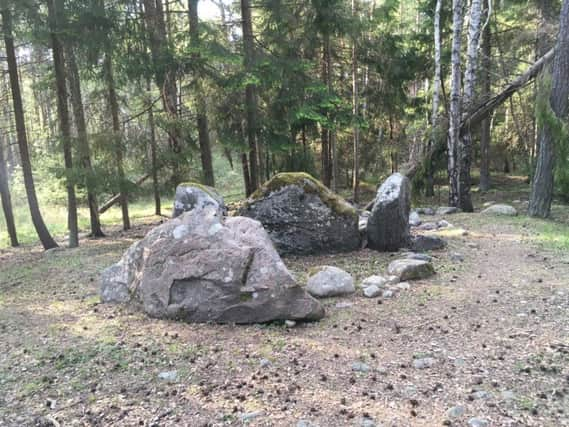Families in Stone Age tombs reveal ‘tight knit’ Neolithic way of life


But thousands of years after they were painstakingly raised, scientists have shed light on the secrets long guarded by Scotland’s megaliths.
A new study has revealed how the ancient structures were integral to “tightly knit” Neolithic societies, serving as the final resting places for the dead.
Advertisement
Hide AdAdvertisement
Hide AdIn what has been described as a “surprising” breakthrough, one tomb analysed by an international team of researchers contained the remains of more than ten generations of the one family.
The study, led by Uppsala University in Sweden, suggests that the megaliths were graves for kindred groups in Stone Age north-western Europe, and were not simply used to bury unrelated members of groups.
The scientists analysed human remains from tombs across Scotland, Ireland and on the Swedish island of Gotland.
The constructions have been a mystery to the scientific community, and the origin and social structure of the groups that built them has remained largely unknown
But by sequencing and analysing the genomes taken from the bones and teeth of 24 individuals from five burial sites, the researchers were able to gain an insight into their way of life.
The genomic data from the remains, which were radiocarbon dated to between 3,800BC and 2,600BC, was then compared to the genetic variation of Stone Age groups and individuals from other parts of Europe.
It showed that the individuals in the megaliths were closely related to Neolithic farmers in northern and western Europe, and also to some groups in Iberia, but less related to farmer groups in central Europe.
What left the scientists taken aback, however, was the revelation that those buried in the megaliths were closely related. Two tombs in Ireland situated a little over a mile apart contained the remains of parents and their offsprings, while other tombs contained multiple generations of families.
Advertisement
Hide AdAdvertisement
Hide AdDr Federico Sanchez-Quintom, a population geneticist at Uppsala University and one of the co-authors of the study, said: “This came as a surprise. It appears as though these Neolithic societies were tightly knit with very close kin relations across burial sites.”
While the research found that the majority of those buried in the megaliths were men, the tombs also contained the remains of related women.
Dr Helena Malmström, an archeogeneticist at the university, explained: “We found paternal continuity through time, including the same Y chromosome haplotypes reoccurring over and over again.
“However, female kindred members were not excluded from the megalith burials, as three of the six kinship relationships in these megaliths involved females.”
Those behind the study, published in the journal, Proceedings of the National Academy of Sciences, say more work needs to be done to determine whether the patterns are unique to the analysed tombs, or reflect a more general trend for megalith burials.
Scotland is home to some of the best preserved Neolithic tombs in Europe, such as the Maeshowe chambered cairn in Stenness in Orkney.
